CRM "Virage" for Fast Business Solutions
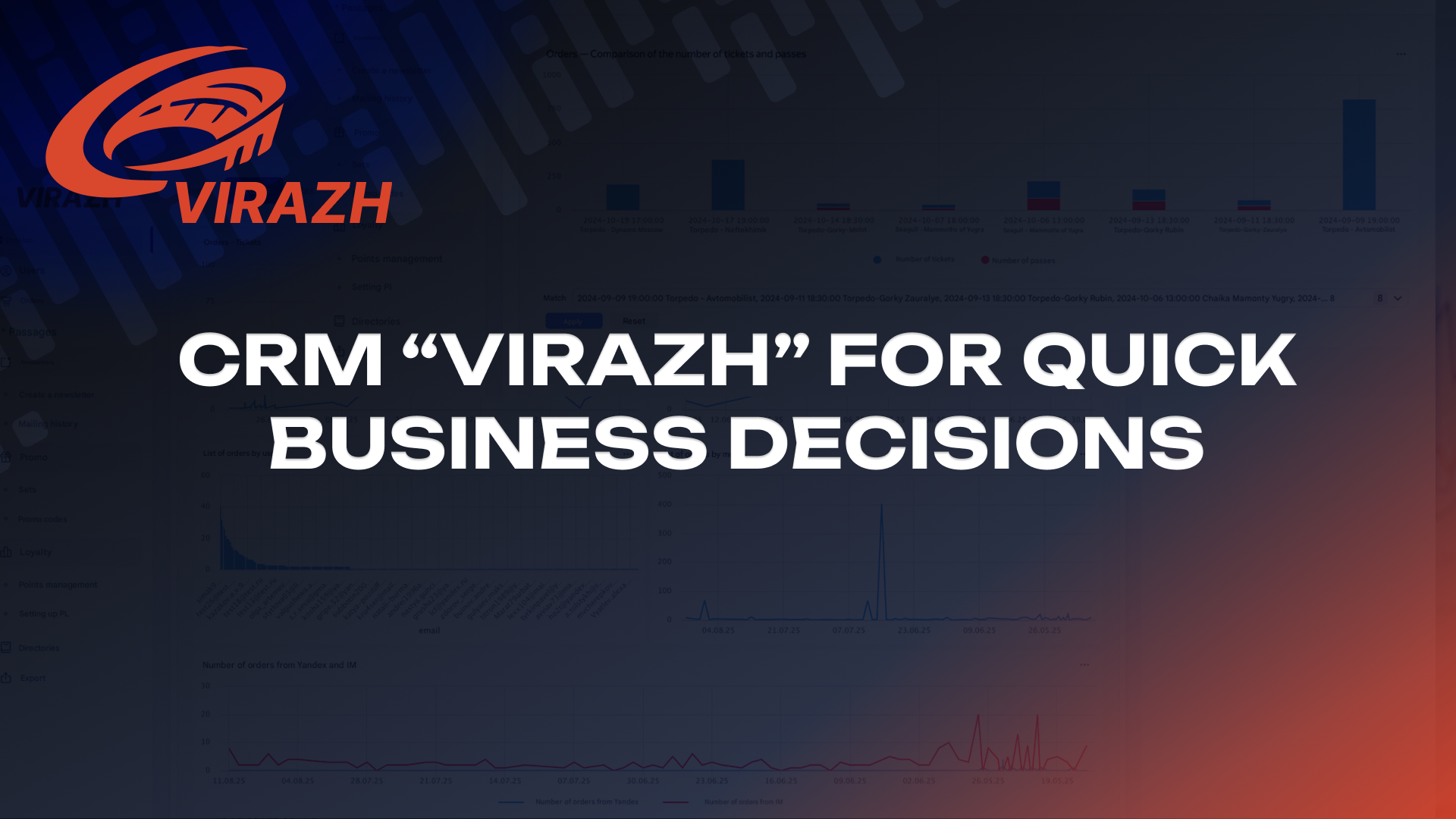
Every CRM is primarily designed to monetize a sports organization. Often, however, CRMs fail to fulfill their main purpose. Today, we will examine the standard functions of a CRM and see how a sports club fan management system expands loyalty programs and solves related problems in 2025.
Updating the fan database: “golden record” instead of regular contact
The Virazh CRM uses what is known as a “Golden Record” — a single fan profile that is accessible on all devices. It collects all information about the fan from various sources: ticket systems and season tickets, merchandise purchases, turnstile passes and Wi-Fi usage at the arena, calls to the call center or communication with customer support, use of the mobile app, and even various offline activations in fan zones. At the same time, fans themselves can provide additional information about themselves in their profiles, for example, choose their favorite player on the team, mark their favorite section, provide detailed information about their family and children, and how they get to the arena — on foot, by public transport, or by private car.
The fan management system can easily identify who owns the profile using deterministic keys (phone number or email address entered during verification, as well as customer ID) and probabilistic matching — matching the full name with the date of birth and behavioral patterns associated with it.
A unified fan profile eliminates the eternal problem of having to pay several times for each person: with a system using conventional contacts, it is not uncommon for information to be duplicated, “dead” profiles to appear, and discrepancies in phone numbers and email addresses to occur. In two weeks, Virazh will help you sort this out, set up automatic verification and deduplication, and enable soft validation in forms.
When analytics is about solving problems, not reviewing reports
The fan management system clearly structures the sports club's business dashboard. All revenue received is distributed across streams: what is received from ticket sales, what from season tickets, and what from merchandise. The system analyzes stadium attendance and occupancy, revenue by price category and price dynamics, monitors repeat purchase dynamics, and tracks potential churn.
Sports CRM also conducts behavioral analytics of fans, studying, for example, likely triggers for attendance — from the weather to the theme of the match (derby, anniversary, etc.). The system builds specific models of interaction with fans depending on the situation: it offers to buy a ticket for the next match or to purchase club merchandise after a victory.
As a result, the club sees an increase in repeat purchases and average check size, a higher share of revenue from personalized campaigns, and a clear division of revenue by segment.
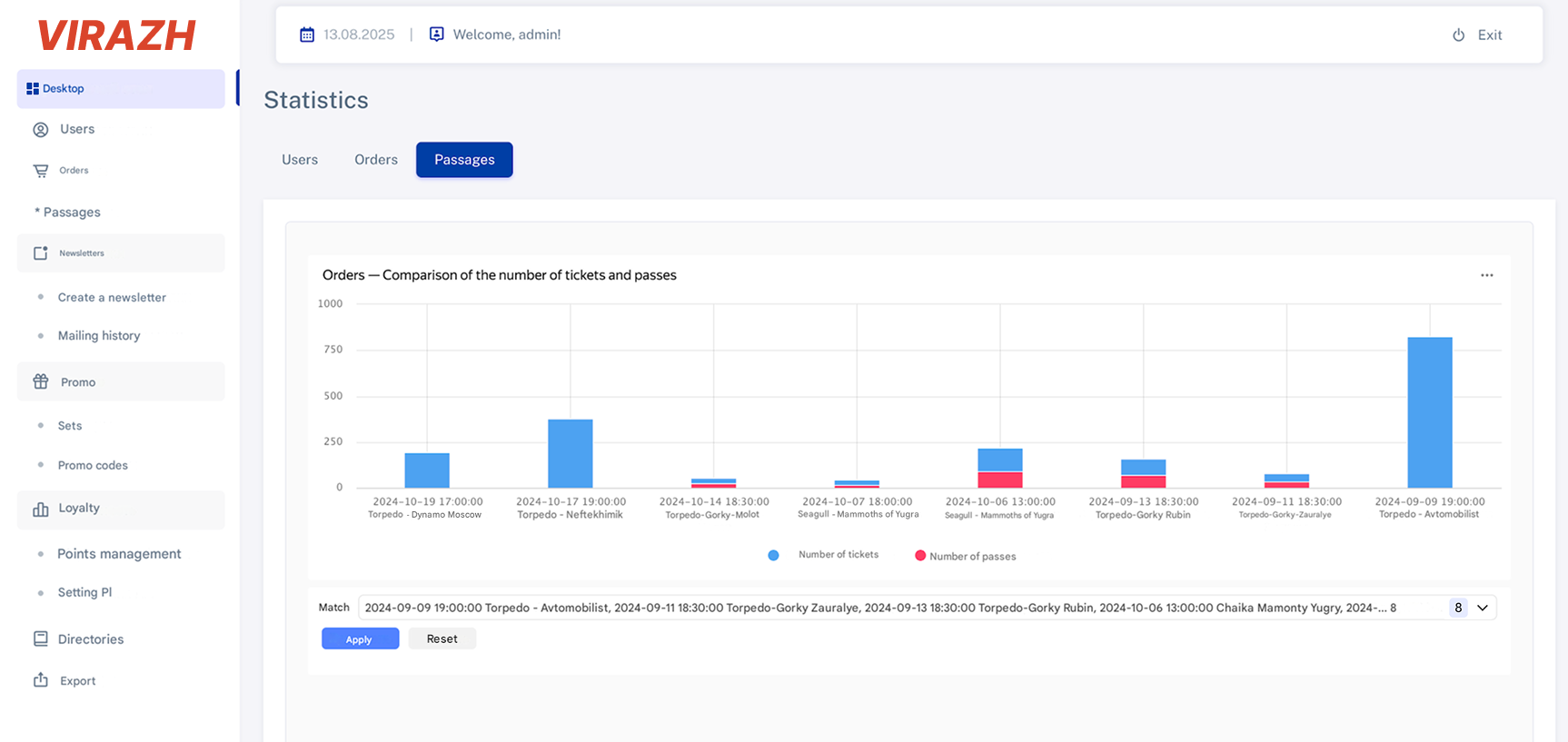
Mechanics for promotional campaigns
In 2025, the principle of “mass promotions” no longer works. Nowadays, more work is being done on specific scenarios for specific events. For example, when you buy one ticket, you are automatically offered the seat next to it — you can invite a friend, girlfriend, colleague, relative, and so on. If a person has attended three matches in a row, they receive an upgrade to the premium zone. If it's a fan's birthday, they get a family package and a photo on the board.
In this case, a wide variety of mechanics are involved in the system: these can be bundles (ticket, merchandise, and food), dynamic discounts depending on stadium occupancy, and installment plans for season tickets. In addition, there are privileges based on “levels” and loyalty status — early access, separate entrance, meet & greet, and other bonuses.
Remember profile personalization? It is thanks to this that the system can offer fans their favorite sector or row, suggest a convenient entry slot, build a route to the arena, or make family offers to make a joint vacation more profitable.
All CRM mechanics are developed with an eye on budget and margin, calculating clear goals and KPIs even before they are launched. At the same time, contact with the user is built as loyally as possible — we will talk about this further.
Building communications
The system selects the channel of communication with the fan depending on values and contact. Push notifications and internal alerts in mobile apps are used for operational information (more “cheap”), email is used for content and bundle offers, and SMS messages and messengers are used for urgent triggers of high importance, such as priority subscription redemption.
It's nice when brands use good manners — no spam in notifications, transparency of goals, and the ability to easily unsubscribe if necessary. In addition, the system controls the frequency of sending such messages at the individual level, rather than the channel level.
How to sum up the results
How to work with season results in CRM Virazh in 2025? First, control groups and holdouts are always mandatory. Second, you need to conduct a clear analysis by segments and channels: where there was overexposure, where creativity burned out, where there is a base burnout effect. Third, you will need to pay attention to product feedback: were there any obstacles to purchase (UX, payment, logistics), does anything need to be improved in the arena, content, or merchandise?
Here is a small case study of how the system works with derbies. Situation: there is a segment of fans who attend home games, the average check is above the median, and they have a favorite player. The derby is in five days, and they still haven't bought tickets for the match. Proposal from CRM: a pair of tickets to their favorite section and a limited edition scarf (derby theme) at a discount on the day of the match. We notify them via push notifications and email, and those who have not opened the push notification within 24 hours receive an additional SMS. Control — 10-15% holdout at the individual level.
The next steps are simple: we see if ticket and merchandise sales have increased, pay attention to repeat visits within a 30-day window, and if growth is evident, we add the mechanism to the template library.
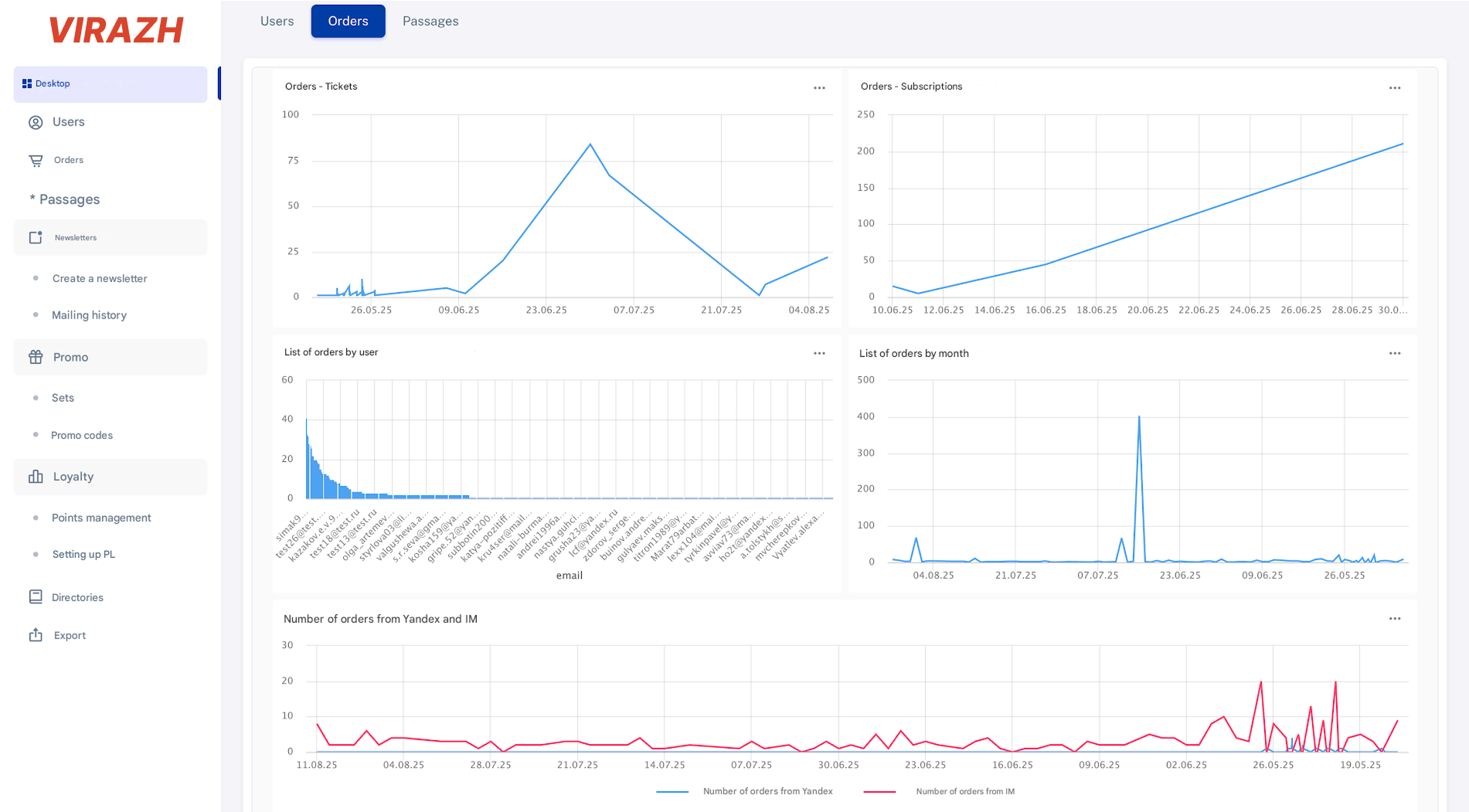
Checklist: What to do in 30 days?
Let's summarize all of the above with a short checklist for working with Virazh for a month.
- Data: we include all key sources in Virazh, set up contact verification and deduplication, as well as consent management.
- Metrics: we approve a unified dashboard with 10 KPIs for monetization and data quality.
- Segments: we collect RFM analysis and divide the audience into segments.
- Campaigns: launch three triggers (upsell spots, birthdays, post-match merchandise sales), set up holdouts everywhere.
- Communications: introduce communication hygiene and frequency control.
- Retro: for each campaign, a report with decisions for the next month.
Final
In 2025, sports CRM will no longer be limited to simple mailings and reports; it will be the telemetry of your fan economy. With the help of Virazh, which collects data from all available sources, combines it into a single fan profile, and suggests what to do and how to do it, you no longer communicate with a crowd of fans, but offer ideal solutions to each of them. This is not only respectful, but also profitable.

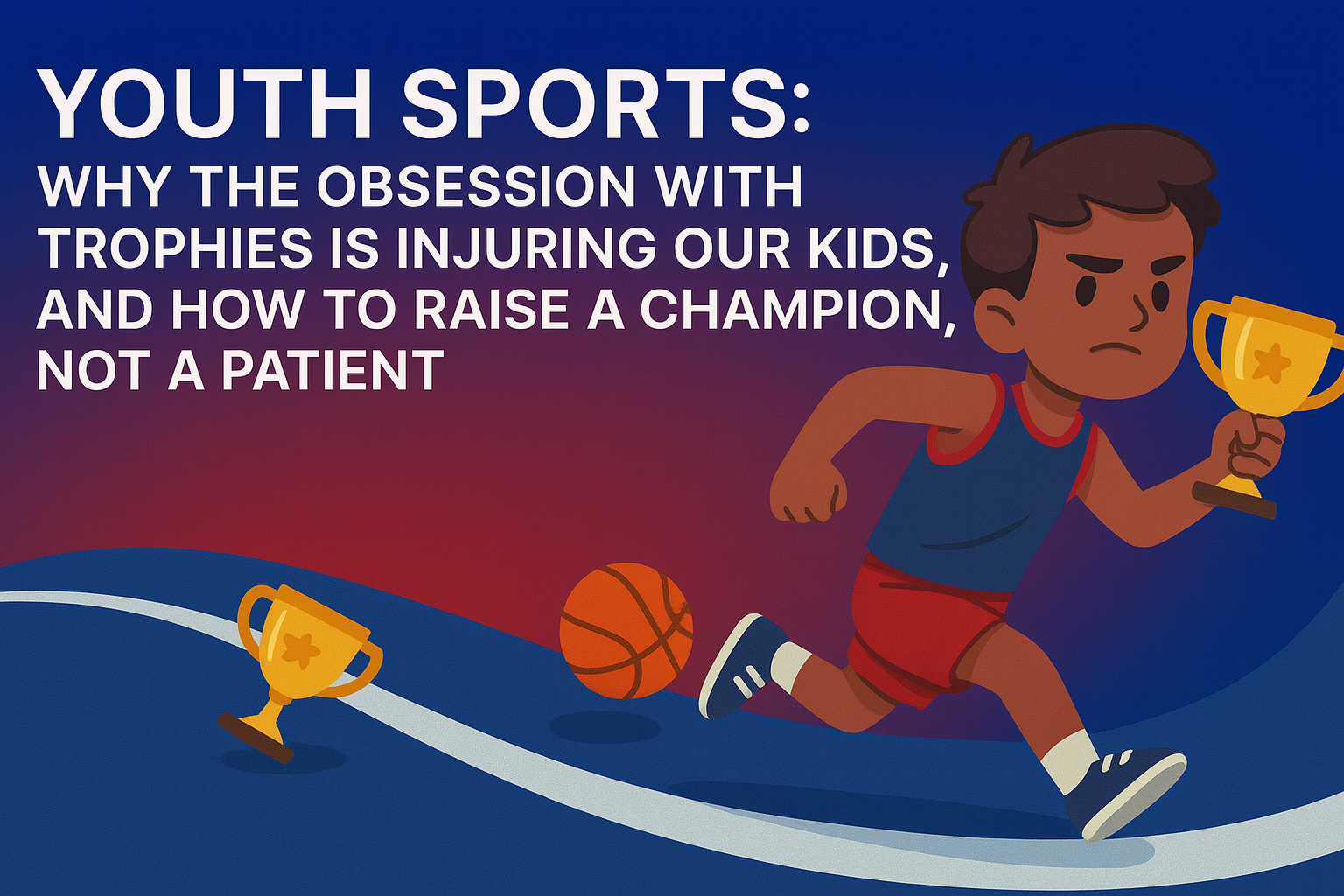


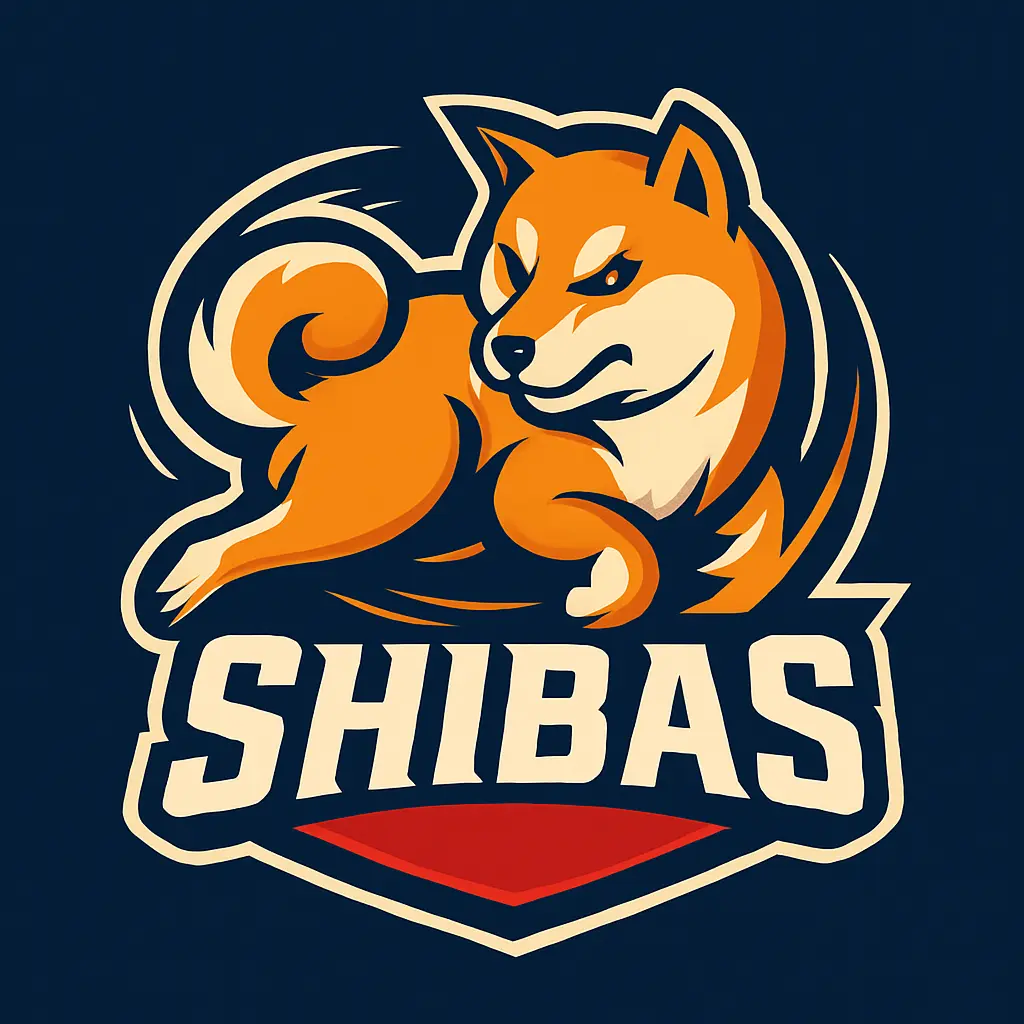






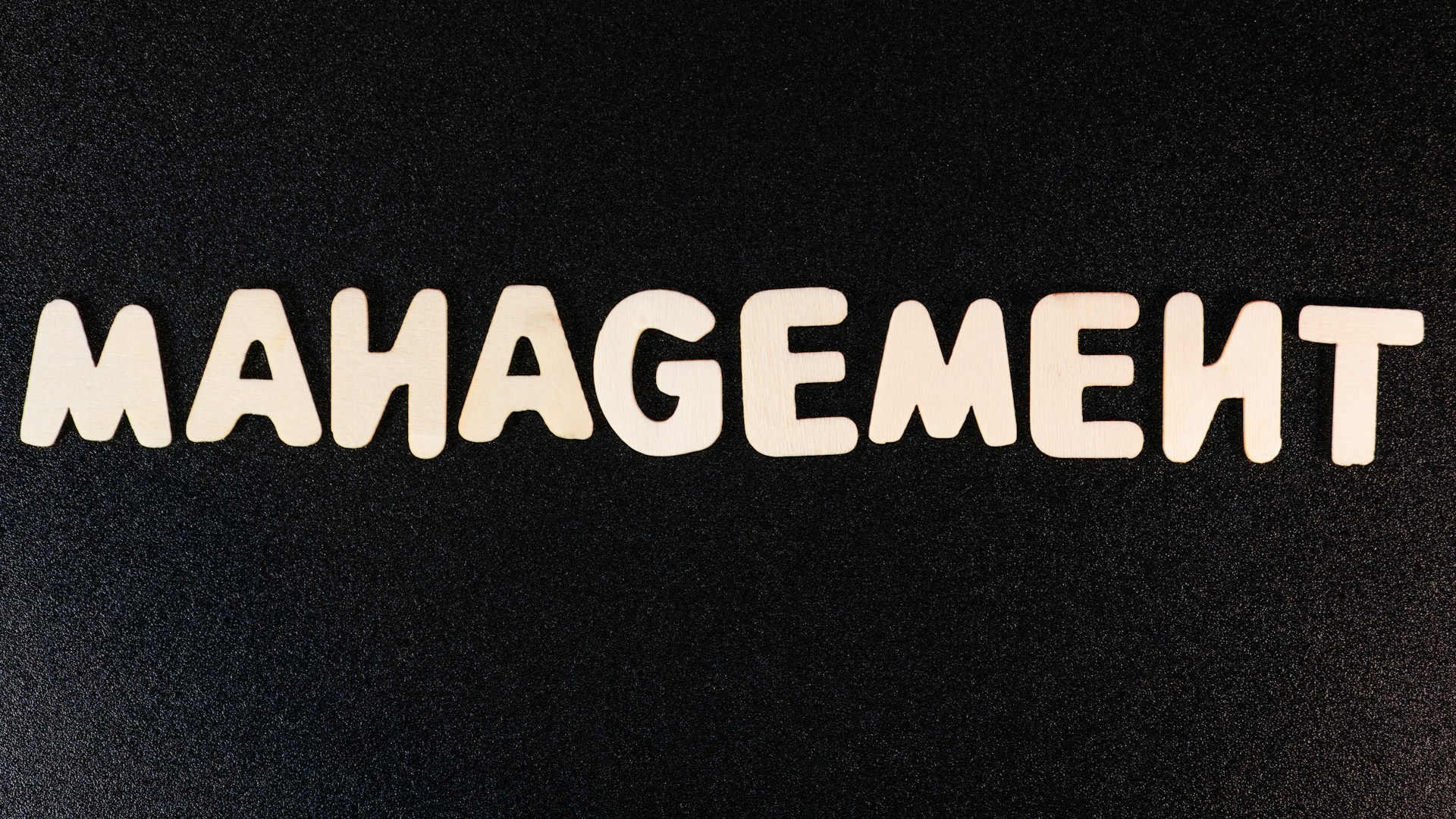





![Custom Software Development Rates by Country [2024]](/assets/images/expertise/it_service/generative-ai-services-hero-banner.webp)





